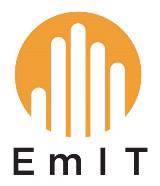


The GRASP Project (GestuRe Augmented Simulations for enhancing exPlanations) is an NSF-funded investigation into the ways that students’ body movements (e.g., gestures) help them to reason about critical science concepts (e.g., heat transfer, the causes of seasons). For this project, we conducted numerous interviews with middle school students to examine how they communicate their science ideas through gestures, and we integrated those gestures into the interfaces of multiple science learning computer simulations. These simulations, developed by our collaborators at the Concord Consortium, allow students to use gestures to control the causal mechanisms behind the science phenomena they are trying to understand, such as using their hands to represent the behavior of molecules. The goal of the GRASP project is to understand how these gesture-augmented simulations are used to develop student explanations, both by individual students and small groups in science classrooms.
Team Members

Robb Lindgren
robblind@illinois.edu
GRASP Co-Investigator

Nathan Kimball
nkimball@concord.org
GRASP Co-Investigator

Cynthia D'Angelo
cdangelo@illinois.edu
GRASP Investigator; Simulations and Classrooms

Barbara Hug
bhug@illinois.edu
GRASP Investigator; Teachers and Technology

Grace Yun
yeyun2@illinois.edu
GRASP Graduate Researcher

Shafagh Hadinezhad
shafagh2@illinois.edu
GRASP Graduate Researcher
Former Team Members

David Brown
debmrown@illinois.edu
GRASP Co-Investigator

Nitasha Mathayas
Postdoctoral Researcher at Indiana University

Rob Wallon
Associate Director of Academic Skills Support, Carle Illinois College of Medicine

Shelana Martin
Graduate Research Assistant at the University of Cincinnati
Publications
Mathayas, N., Brown, D. E., & Lindgren, R. (2021). “I got to see, and I got to be a part of it”: How cued gesturing facilitates middle‐school students' explanatory modeling of thermal conduction [pdf]. Journal of Research in Science Teaching, 58(10), 1557-1589. https://doi.org/10.1002/tea.21718
Mathayas, N., Brown, D. E., Wallon, R. C., & Lindgren, R. (2019). Representational gesturing as an epistemic tool for the development of mechanistic explanatory models [pdf]. Science Education, 103(4), 1047-1079. https://doi.org/10.1002/sce.21516
Lindgren, R. & Price, S. (2018). Embodiment and technology enhanced learning environments: Cultivating a new community of design research [pdf]. In J. Leigh (Ed.), Conversations on embodiment across higher education: Practice, teaching, and research (pp. 173-191). Routledge. https://www.taylorfrancis.com/chapters/edit/10.4324/9781315266664-24
Lindgren, R., & Brown, D. E. (2018). Embodied explanatory control: Simulations that prompt users to enact causal mechanisms. Symposium paper in Moving forward: In search of synergy across diverse views on
the role of physical movement in design for STEM education [pdf] in the Proceedings of the International Conference of the Learning Sciences (ICLS 2018) (pp. 1246-1247). London, UK. https://repository.isls.org/handle/1/600
Wallon, R. C., & Lindgren, R. (2017). Considerations for the design of gesture-augmented learning environments. In M. J. Spector, B. B. Lockee, & M. D. Childress (Eds.), Learning, design, and technology: An international compendium of theory, research, practice and policy (pp. 1-21). Cham, Switzerland: Springer International Publishing. https://doi.org/10.1007/978-3-319-17727-4_75-1
Lindgren, R., Wallon, R. C., Brown, D. E., Mathayas, N., & Kimball, N. (2016). “Show me” what you mean: Learning and design implications of eliciting gesture in student explanations [pdf]. In C.-K. Looi, J. Polman, U. Cress, & P. Reimann (Eds.), Proceedings of the International Conference of the Learning Sciences (ICLS 2016) (pp. 1014-1017). Singapore: National Institute of Education. https://repository.isls.org/handle/1/367